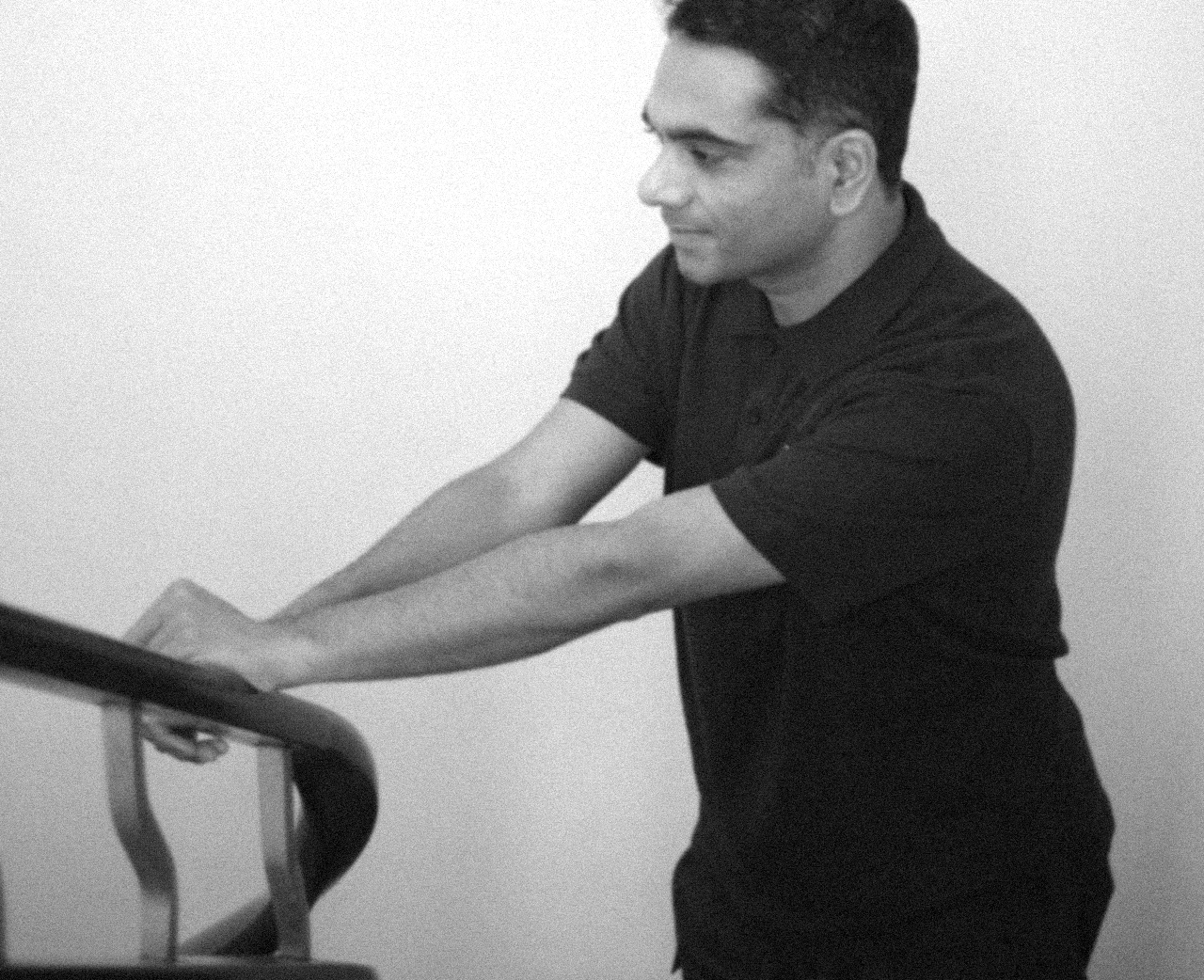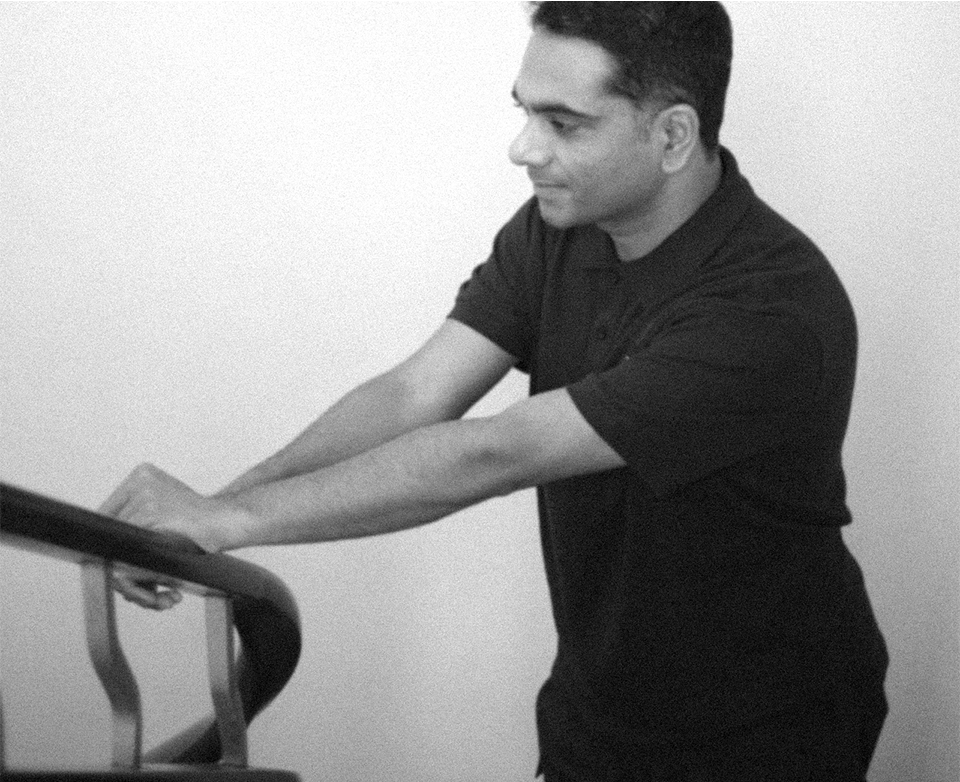




<h1 class="left">Many know him as the creative director of the clothing brand Bhaane. And before that, Nimish Shah was frontrunning his label Shift. It’s back in a sense, not as the brand we once knew but in a new module, a WIP system that Shah has devised to turn over a new page in the creative space. After existing in the system as purely a fashion fixture, living, breathing and consuming textiles and fabrics, Shah wanted to shift gears, and he does that with the debut of Shift Residency, an artist residency program that saw its first instalment with four multidisciplinary artists to delve into an enquiry of textile and manual screenprinting.</h1>
<h1 class="left">Why did he gravitate towards an artist residency? “It was amazing back in the day with Bhaane and with Shift, and it was a completely different process. But when it came to restarting my practice, Shift just became the operating word. I’m still understanding what it’s going to be next,” he tells me. While the residency borrows the format of one, it doesn’t demand an end product or final showcase. Shah insists the focus lies elsewhere: to immerse, to research, to ideate — with no finish line in sight. “I wanted to build a creative manifesto for Shift. Hosting a residency was my way of bringing together like-minded people who can respond to a brief, to create inspiration collectively, and to encourage community learning.”</h1>
<h1 class="centre">If this sounds like a reaction to a culture of over-consumption and recycling of recycled ideas, that’s because it is. Shah is candid about how fashion, at scale, often becomes a cycle of repetition, a machine churning objects. His own practice lives in close proximity to production; his house sits next to a factory, an ever-present reminder of how fashion exists as infrastructure. But for him, this context is also fertile ground for reframing. “I was interested in how we look at repetition. In mass production, repetition creates objects. But in art, repetition can hold space, build strength, and intensify meaning. Bringing these perspectives together was key.”</h1>
<h1 class="centre">At Shift Residency, the emphasis is on the backstage rather than the stage. “As a designer, my process used to be about seeking inspiration, being motivated, making something, and then refining it into a product. When you invite others into that cycle, they usually only see the last leg. Here, the whole thing is reversed. It’s like the BTS of a director making a film — you see the process first, before the film exists.”</h1>
<h1 class="left">Shah is most animated when talking about process as something therapeutic. “There’s something beautiful about the act of making, the way a machine responds exactly how you want it to, or how someone can weave their own fabric and find therapy in it. I don’t believe mass equals volume equals money, that’s not the only narrative. There’s deep creativity and romance in the process, and no one really talks about that. For me, that’s worth celebrating.”</h1>
<h1 class="centre">The first chapter of Shift Residency explored textile printing as a medium. It wasn’t about producing fashion objects but about interrogating repetition, process, and materiality itself. “Normally, a residency just gives you a working environment, space to process ideas. But here, we also introduced a specific medium for artists to explore, to see how they feel about it. It’s not a production residency, yet production sits quietly in the background.”</h1>
<h1 class="centre">Ultimately, Shah’s project is less about restarting a brand than about unlearning its rules. “I didn’t want to go back to doing exactly what I was doing before. I wanted Shift to evolve into a collective of thoughts, a space for interpretation, a manifesto of sorts. It’s less about me and more about the heads I can bring together, the energy we can create, the conversations that spark something new.”</h1>
<h1 class="left">In a time when culture often seems stuck in a loop, circling references of references, Shah’s Shift Residency opens a window into a slower, more deliberate practice. It’s not about the product but the pause — and in that pause, perhaps, a way to be original again.</h1>
<h1 class="left">www.shift-india.com</h1>
<h1 class="full">Many know him as the creative director of the clothing brand Bhaane. And before that, Nimish Shah was frontrunning his label Shift. It’s back in a sense, not as the brand we once knew but in a new module, a WIP system that Shah has devised to turn over a new page in the creative space. After existing in the system as purely a fashion fixture, living, breathing and consuming textiles and fabrics, Shah wanted to shift gears, and he does that with the debut of Shift Residency, an artist residency program that saw its first instalment with four multidisciplinary artists to delve into an enquiry of textile and manual screenprinting.</h1>
<h1 class="full">Why did he gravitate towards an artist residency? “It was amazing back in the day with Bhaane and with Shift, and it was a completely different process. But when it came to restarting my practice, Shift just became the operating word. I’m still understanding what it’s going to be next,” he tells me. While the residency borrows the format of one, it doesn’t demand an end product or final showcase. Shah insists the focus lies elsewhere: to immerse, to research, to ideate — with no finish line in sight. “I wanted to build a creative manifesto for Shift. Hosting a residency was my way of bringing together like-minded people who can respond to a brief, to create inspiration collectively, and to encourage community learning.”</h1>
<h1 class="full">If this sounds like a reaction to a culture of over-consumption and recycling of recycled ideas, that’s because it is. Shah is candid about how fashion, at scale, often becomes a cycle of repetition, a machine churning objects. His own practice lives in close proximity to production; his house sits next to a factory, an ever-present reminder of how fashion exists as infrastructure. But for him, this context is also fertile ground for reframing. “I was interested in how we look at repetition. In mass production, repetition creates objects. But in art, repetition can hold space, build strength, and intensify meaning. Bringing these perspectives together was key.”</h1>
<h1 class="full">At Shift Residency, the emphasis is on the backstage rather than the stage. “As a designer, my process used to be about seeking inspiration, being motivated, making something, and then refining it into a product. When you invite others into that cycle, they usually only see the last leg. Here, the whole thing is reversed. It’s like the BTS of a director making a film — you see the process first, before the film exists.”</h1>
<h1 class="full">Shah is most animated when talking about process as something therapeutic. “There’s something beautiful about the act of making, the way a machine responds exactly how you want it to, or how someone can weave their own fabric and find therapy in it. I don’t believe mass equals volume equals money, that’s not the only narrative. There’s deep creativity and romance in the process, and no one really talks about that. For me, that’s worth celebrating.”</h1>
<h1 class="full">The first chapter of Shift Residency explored textile printing as a medium. It wasn’t about producing fashion objects but about interrogating repetition, process, and materiality itself. “Normally, a residency just gives you a working environment, space to process ideas. But here, we also introduced a specific medium for artists to explore, to see how they feel about it. It’s not a production residency, yet production sits quietly in the background.”</h1>
<h1 class="full">Ultimately, Shah’s project is less about restarting a brand than about unlearning its rules. “I didn’t want to go back to doing exactly what I was doing before. I wanted Shift to evolve into a collective of thoughts, a space for interpretation, a manifesto of sorts. It’s less about me and more about the heads I can bring together, the energy we can create, the conversations that spark something new.”</h1>
<h1 class="full">In a time when culture often seems stuck in a loop, circling references of references, Shah’s Shift Residency opens a window into a slower, more deliberate practice. It’s not about the product but the pause — and in that pause, perhaps, a way to be original again.</h1>
<h1 class="left">www.shift-india.com</h1>